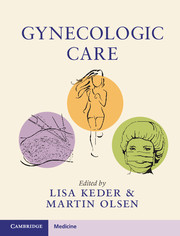Book contents
36 - Ovarian Germ Cell Tumors
from Section 5 - Gynecologic Oncology
Published online by Cambridge University Press: 01 February 2018
Summary
Introduction
Ovarian germ cell tumors (OGCTs) arise from primordial germ cells and may exhibit a broad spectrum of histologic differentiation and pathologic behavior (1). They comprise approximately 20–25 percent of ovarian neoplasms and account for less than 5 percent of ovarian malignancies (2–4). These tumors principally occur during adolescence and early adulthood, accounting for the majority of ovarian tumors in this age group (5). Significant improvements in the management of OGCTs have been achieved allowing a large portion of women to retain reproductive potential with excellent clinical outcomes. The pathology, clinical presentation, staging, treatment, and prognosis of malignant OGCTs will be reviewed in this chapter.
Pathology
The WHO classifies OGCTs into three main categories as shown in Box 36.1. These categories include primitive germ cell tumors, biphasic or triphasic teratomas, and monodermal teratoma or somatic-type tumors associated with dermoid cysts. Dysgerminoma, immature teratoma, yolk sac tumors, and mixed germ cell tumors account for 90 percent of cases of malignant OGCT (6).
Box 36.1 WHO Classification for Ovarian Germ Cell Tumors
Primitive germ cell tumors
Dysgerminoma
Yolk sac (endodermal sinus) tumor
Embryonal tumor
Choriocarcinoma
Mixed
Biphasic/triphasic teratoma
Mature teratoma
Immature teratoma
Monodermal teratoma/somatic-type tumors arising from mature teratoma
Struma ovarii
Carcinoid
Neuroectodermal-type tumors
Sebaceous tumors
Other (squamous cell carcinoma)
Dysgerminoma
Dysgerminomas account for approximately 30–40 percent of malignant OGCTs (6,7). Though most dysgerminomas arise in patients with a normal karyotype, it is the most frequent ovarian neoplasm in patients with gonadal dysgenesis (8–10). Approximately 5–10 percent of these tumors develop in association with gonadoblastomas, which is most common in phenotypic females who have a Y chromosome including patients with pure gonadal dysgenesis (46, XY), mixed gonadal dysgenesis (45X, 46, XY), or complete androgen insensitivity (46, XY), but can also be found in patients with Turner syndrome (45, X; 45 X/46XX; 45X/46XY) (8,9,11).
On gross examination, dysgerminomas tend to be large, firm, lobulated masses with a cream to pale-tan color (12,13). Areas of hemorrhage, necrosis, or cystic degeneration may be present (7). While the vast majority are unilateral, approximately 10 percent are bilateral on gross examination and another 10 percent have microscopic involvement of the contralateral ovary (10,12,13).
- Type
- Chapter
- Information
- Gynecologic Care , pp. 350 - 359Publisher: Cambridge University PressPrint publication year: 2018



